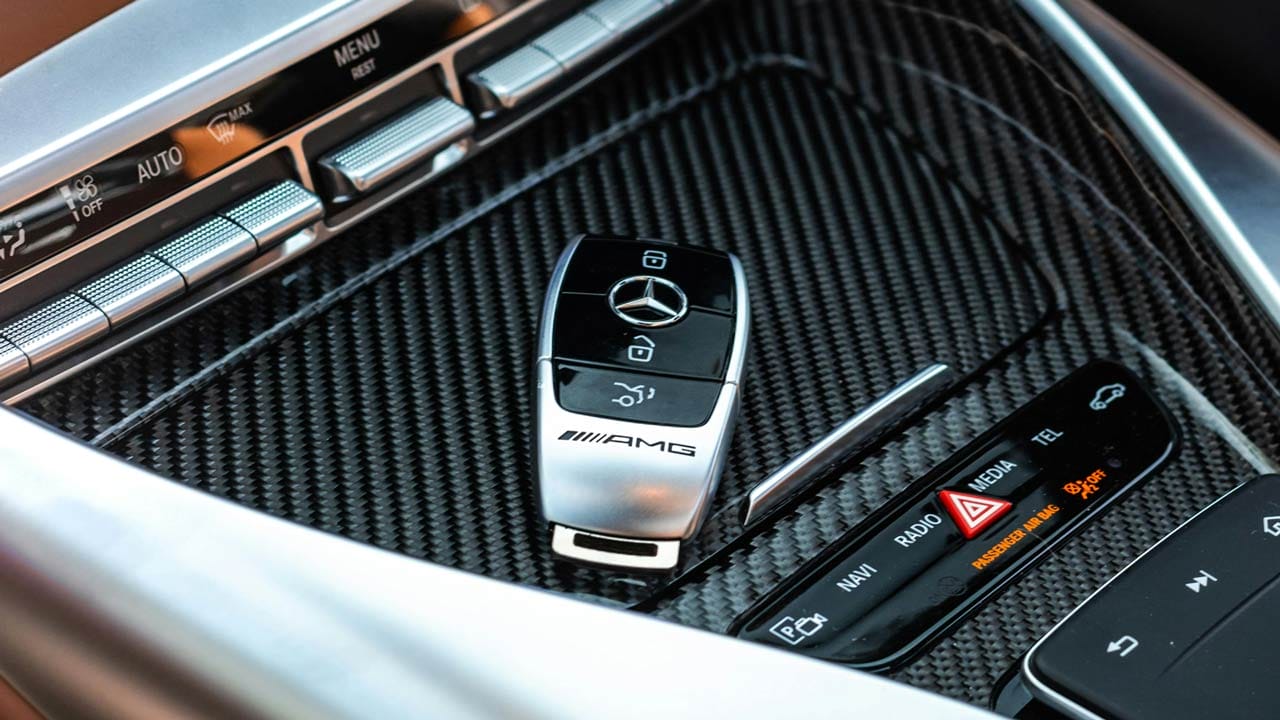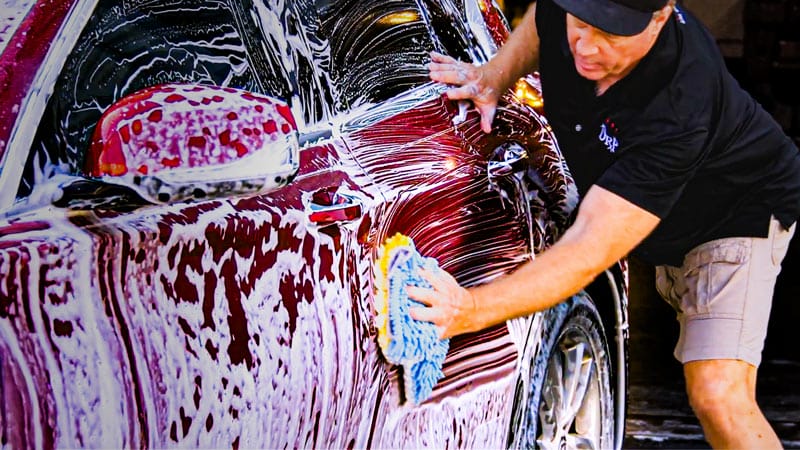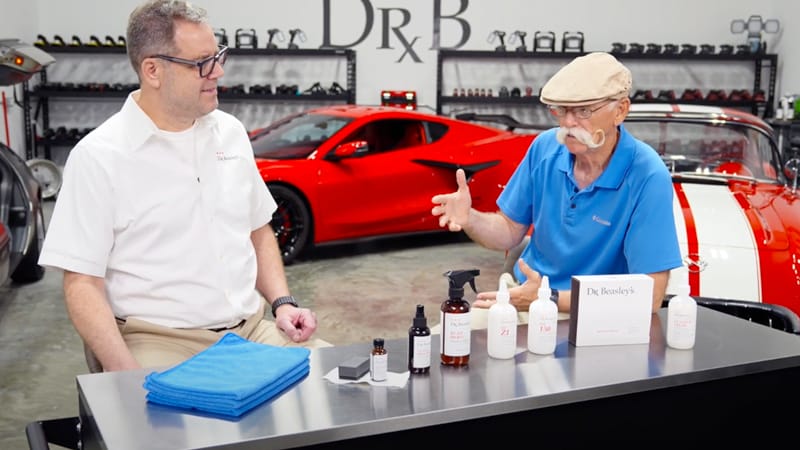Last Updated June 26, 2024
When people use the term “Carbon Fiber”, they’re usually referring to carbon fiber-reinforced polymers — that is, carbon fiber sheets laminated in a polymer, usually an epoxy resin. Carbon fiber-reinforced polymers are exceptionally strong, exhibiting extreme stiffness as well as tensile strength. Because of this strength, carbon fiber is a popular material for many applications and industries like cars, planes and industrial equipment.
When talking about carbon fiber, you may hear the terms “wet carbon fiber” and “dry carbon fiber” mentioned in conversation. Some assume this refers to the finish, thinking that wet denotes a glossy finish while dry meaning a matte finish. It makes intuitive sense, but it’s wrong.
The terms “wet carbon fiber” and “dry carbon fiber” actually refer to different lamination processes used to encase the carbon fiber material within the polymer. In this article, we’ll go over the processes that produce wet and dry carbon fiber in detail so you can fully understand the difference between the two types of carbon fiber.

The Difference Between Wet and Dry Carbon Fiber
The difference between “wet” and “dry” carbon fiber comes down to how the carbon fiber was laminated in the resin.
Wet carbon fiber is called “wet” because it is laminated by applying liquid resin directly onto the carbon fiber in a mold using a brush or spray gun. This is typically called a “wet lay-up”.
Dry carbon fiber is called “dry” because the carbon fiber is pre-impregnated (“prepreg”) with dry, uncured resin before it is cured in an autoclave.
What’s Better — Wet or Dry Carbon Fiber?
So if wet and dry carbon fiber differ based on how they’re manufactured, do they also differ in quality? Which is a better option? There’s a simple answer.
Overall, dry carbon fiber is a better choice simply because it’s more consistent in its appearance and structure.
The wet lay-up process used to produce wet carbon fiber is inconsistent as the quantity of resin is not controlled and the application method is not always even.
Dry carbon fiber, on the other hand, is infused with a consistent amount of resin with a completely even distribution across the carbon fiber fabric.

Does Wet Carbon Fiber Have a Glossy Finish? Does Dry Carbon Fiber Have a Matte Finish?
This is a common misconception that we mentioned in the introduction. No, the terms “wet” and “dry” carbon fiber do not refer to the carbon fiber’s finish. The fact is, any type of finish, whether it’s satin, matte or glossy, can be applied to carbon fiber. It’s simply a matter of how the resin is finished, or whether matting additives were used in the resin.
To summarize:
Wet carbon fiber refers to the “wet lay-up” process of laminating carbon fiber with liquid resin.
Dry carbon fiber refers to the “prepreg” process of infusing carbon fiber with solid resin before curing in an autoclave.
In terms of quality, dry carbon fiber produces a more consistent product and is therefore superior to wet carbon fiber.
In terms of the finish, the terms “wet” and “dry” have no bearing on the reflectivity of the carbon fiber’s surface.
Thanks for reading! This article is an update to our previous article on the topic, which had some factual inaccuracies that were corrected by some intrepid commenters. As such, you may see some critical comments below — those are referring to the old article.




Totally wrong. (Carbon fibre manufacturer talking).
You can make wet carbon fibre having matte surface, and vice versa, looks make no difference at all.
Wet carbon fibre means carbon fibre has been impregnated in epoxy by hand, and ususally cured in an oven, or even at room temperature, and the terminology of “wet” carbon fibre is beceause in the process of manufacturing the part, you actually have to manually “wet” the carbon fibre cloth with epoxy. Infusion is a wet carbon fibre technique wich consist of infusing the carbon fibre with epoxy resin by “soaking” epoxy into it while the part is under vaccum pressure, wich often produces better results when mastered than just applying resin directly onto the cloth while laying it up into the mold.
Dry carbon fibre is a completely different process, wich consist of having “pre-impregnated” (also reffered as prepreg) fibres. This means the carbon fibre cloth is already impregnated by resin by manufacturer. Prepreg carbon fibres usually need to be stored at -20°C to not cure by themselves at room temperature. Then, in most cases, the prepreg part is cured in an Autoclave. This results in better quality parts for various reasons, mostly beceause more pressure applied on the part during vaccum, and thus reducing the resin/fibre ratio needed in the part. This is reffered as “Dry” carbon fibre beceause you do not actually need to manually “wet” the carbon fibre witih epoxy since they are already pre-impregnated.
Anyways, the fact you have a matte or glossy finish actually makes NO difference at ALL. You can apply a glossy layer of gelcoat to a dry carbon fibre part, and you can have a matte finish in a wet-layup process. Mostly, the glossy/matte finish is depending if your mold has a matte or glossy finish, or you can just simply grit with soft sandpaper a glossy part to get a matte finish.
Dry carbon fibre is a very costly process, beceause first, you need an autoclave, prepreg carbon fibre is way more expensive than just buying carbon fibre cloth and epoxy, and then, the molds and vaccum tooling need to be of higher quality and high temperature resistant since prepreg usually need to cure at higher temperature than usual lamination epoxies. For example, you can realise a mold for a “wet-layup” process with just a gelcoat and some polyesther, while you’d use an aluminum machined mold for high temperature autoclave applications.
Mostly, the strenght of carbon fibre depends of the density of the part, wich is greater in dry carbon fibre parts beceause of the autoclave curing process, is highly dependent of curing temperatures and propreties of the epoxy used itself. Strenght comes from the carbon fibre itself, so, more fibre – less resin is a must, but not too low to avoid “air voids” into the part wich would cause structural issues. Autoclave allows for a lower resin/fibre ratio without having structural problems beceause the higher pressure in the autoclave vaccum increases the “compactation” of the part.
For maintenance, it actually depends more if the part has a gelcoat or a varnish applied to it or not. If not, the fibres are closer to the surface, and you’d risk to damage it by using inappropriate products. Gelcoat-Varnish parts are actually better protected.
^ Give this man a medal.
I collect (semi) high quality pocket knives. They usually have titanium handles. I just ordered my first flipper with carbon fiber scales, I’ve never owned anything that had carbon fiber at all. This material is completely new to me. I believe they are dry carbon fiber scales since it’s a dull rough looking finish. Not the shiny plastic looking wet type. How would you suggest I care and maintain the carbon fiber? Do I need to do anything to it at all besides keep it clean? Is there anything that I absolutely should NOT do to it? For example, Does it absorb water if it got wet by accident?
Basically, it is carbon fiber trapped in epoxy resin. So, it is like plastic. Don’t use solvants on it. Do not sand it otherwise it will screw the surface finish. It is resistant to temperature to a certain limit (depending on the resin used, but i wouldnt expose it to more than 50°C for a random carbon fiber part), and the resin can haze if exposed to sun for a long time (unless it is an uv resistant resin, but there is not really any way you can know about it).
What are the properties of carbon fiber.
https://uploads.disquscdn.com/images/5d8eb9e57cad5e472a7c27c2ba90cee1bc5ed5c33c765e872f0a15dd9c772797.jpg Ay yo… RESPECT! One question… with “Dry Carbon” can one get a few coats of clear coat on the parts to give it more protection and shine? Looking at getting some CF body parts for my hog to drop some good weight.
Yes, simply apply a shiny clear coat to a “matte” cf part and it’ll be shiny.
hi Jean. I just want to learn prepreg process’ parameters. Do u know it?
Wow Jean.
That was some education right their. Thank you for making this a lot more understandable.
If I may ask a question or two?
I’ve been experimenting with a new design of drone frame using the lesser quality 3k 2/2 twill carbon fibre (c.f.) called Black stuff from Easy composites. Cheapest option at the time.
So, I’m hand laying up on a two piece mould (due to the really tight Vs I’m expecting to achieve with 14 layers of c.f.).
So, after curing I do get the shape I want with its strength but can’t seem to get a glossy finish.!
And second. After curing the cut out shapes for the frame are solid until heat is applied for shrinking down the heat Sleeving then the c.f. bends like spaghetti.
P.s. I’m not curing in oven. Just at room temperature.
Can you give me any advise please that won’t cost the earth?
Thank you in advance.
the strenght of carbon fibre depends of the density
it also depends on the resin you use. Good resin hold different layers of fabric super close to each other so the physics will do the work, each layer will bite each other to hold the shape they have. Also good resin itself can be harder than other.
Just add on, all others are right.
He did specify that the strength also depends on the properties within the epoxy
i couldnt make prepreg stuff because of i dont know and find its process parameters. i just want to make simple speargun for myself. Do you all help me please?
Check out easy composites they have some tutorials
Why do people write articles on stuff they know nothing about…. The same carbon fiber is used to make prepreg as regular cf fabric.
You can measure and add precise amounts of resin regardless of the process.
Part strength comes from design. Parts made with prepreg are no stronger than parts made by adding the resin yourself, if you know what you are doing. Using heat cure resin (instead of room temp) allows you to increase strength by debulking but that works even if you add the resin yourself. There is no magic with prepreg
You can heat cure, cure under vacuum, compression mold or use an autoclave with any process.
I make my own prepreg with heat cure resin and get better results than the overpriced commercial prepreg.